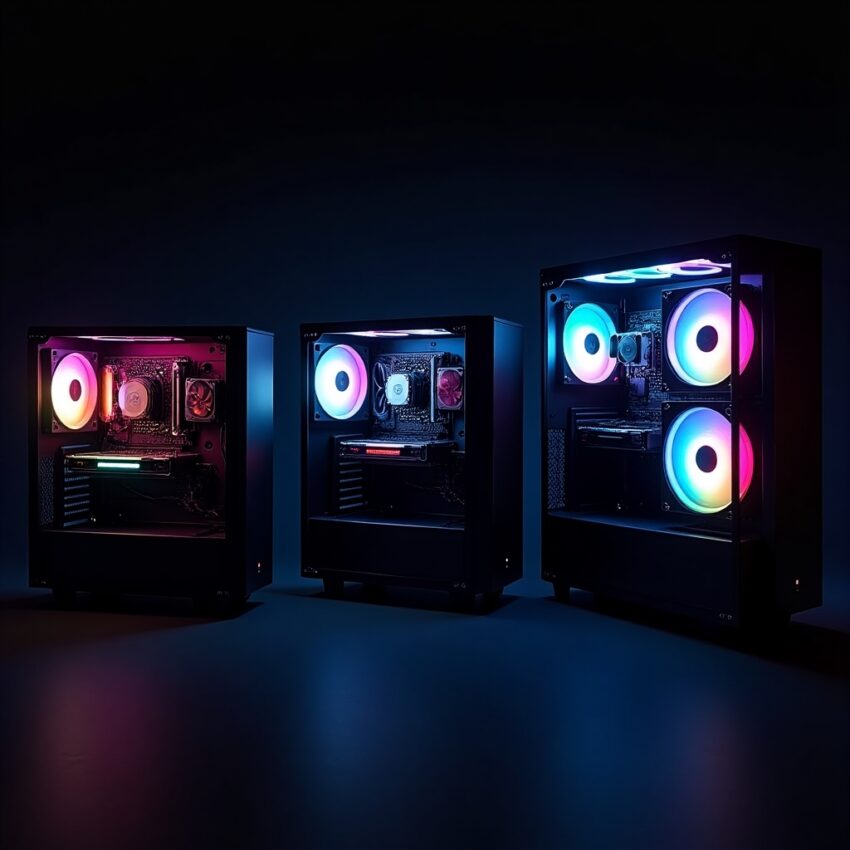As the PC hardware landscape continues to evolve, May 2025 brings a fresh set of recommendations for building a gaming PC tailored to various budgets. This month’s guide focuses on three distinct configurations: Basic, Optimal, and Advanced, each designed to deliver the best performance for their respective price points.
Table of Contents
Basic Build
The Basic Build is crafted for gamers seeking a cost-effective solution without compromising on performance. This configuration is ideal for playing modern AAA titles at 1080p resolution with high to ultra settings.
- CPU: AMD Ryzen 5 5600X
- GPU: NVIDIA GeForce RTX 3060 12GB
- Motherboard: MSI B550M PRO-VDH WiFi
- RAM: 16GB DDR4-3200
- Storage: 500GB NVMe SSD
- Power Supply: 550W 80+ Bronze
- Case: Mid-tower with good airflow
This setup ensures smooth gameplay in most current titles and provides a solid foundation for future upgrades.
Optimal Build
The Optimal Build strikes a balance between performance and cost, targeting gamers who desire higher frame rates and better graphics fidelity at 1440p resolution.
- CPU: Intel Core i5-13600K
- GPU: NVIDIA GeForce RTX 4070 12GB
- Motherboard: ASUS TUF Gaming Z690-Plus WiFi D4
- RAM: 32GB DDR4-3600
- Storage: 1TB NVMe SSD
- Power Supply: 650W 80+ Gold
- Case: Mid-tower with enhanced cooling
This configuration offers excellent performance for high-refresh-rate gaming and content creation tasks.
Advanced Build
Designed for enthusiasts and professionals, the Advanced Build delivers top-tier performance for 4K gaming, streaming, and intensive workloads.
- CPU: AMD Ryzen 9 7950X
- GPU: NVIDIA GeForce RTX 4090 24GB
- Motherboard: ASUS ROG Crosshair X670E Hero
- RAM: 64GB DDR5-6000
- Storage: 2TB NVMe SSD + 4TB HDD
- Power Supply: 1000W 80+ Platinum
- Case: Full-tower with advanced cooling solutions
This powerhouse setup ensures uncompromised performance across all demanding applications and future-proofs your system for years to come.
Conclusion
Whether you’re building your first gaming PC or upgrading to a high-end workstation, these configurations provide a roadmap tailored to your needs and budget. Always consider component compatibility and future upgrade paths when assembling your system.

